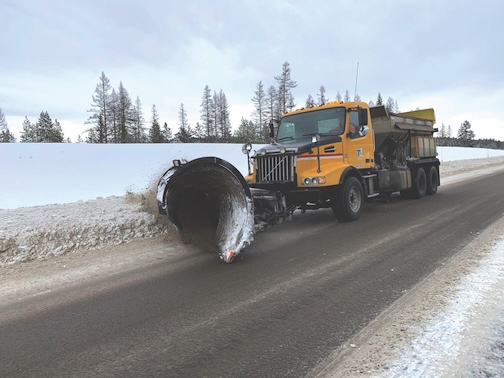News of the weird: Bring back dodo? Ambitious plan draws investors, critics
Published 9:18 am Tuesday, February 7, 2023

- A rare fragment of a Dodo femur bone is displayed for photographs next to an image of a member of the extinct bird species at Christie's auction house's premises in London, March 27, 2013. Colossal Biosciences has raised an additional $150 million from investors to develop genetic technologies that the company claims will help to bring back some extinct species, including the dodo and the woolly mammoth. Other scientists are skeptical that such feats are really possible, or even advisable for conservation.
WASHINGTON — The dodo bird isn’t coming back anytime soon. Nor is the woolly mammoth. But a company working on technologies to bring back extinct species has attracted more investors, while other scientists are skeptical such feats are possible or a good idea.
Trending
Colossal Biosciences first announced its ambitious plan to revive the woolly mammoth two years ago, and on Tuesday, Jan. 31, said it wanted to bring back the dodo bird, too.
“The dodo is a symbol of man-made extinction,” said Ben Lamm, a serial entrepreneur and co-founder and CEO of Colossal. The company has formed a division to focus on bird-related genetic technologies.
The last dodo, a flightless bird about the size of a turkey, was killed in 1681 on the Indian Ocean island of Mauritius.
Trending
The Dallas company, which launched in 2021, also announced it had raised an additional $150 million in funding. To date, it has raised $225 million from wide-ranging investors that include United States Innovative Technology Fund, Breyer Capital and In-Q-Tel, the CIA’s venture capital firm which invests in technology.
The prospect of bringing the dodo back isn’t expected to directly make money, said Lamm. But the genetic tools and equipment that the company develops to try to do it may have other uses, including for human health care, he said.
For example, Colossal is now testing tools to tweak several parts of the genome simultaneously. It’s also working on technologies for what is sometimes called an “artificial womb,” he said.
The dodo’s closest living relative is the Nicobar pigeon, said Beth Shapiro, a molecular biologist on Colossal’s scientific advisory board, who has been studying the dodo for two decades. Shapiro is paid by the Howard Hughes Medical Institute, which also supports The Associated Press’ Health and Science Department.
Her team plans to study DNA differences between the Nicobar pigeon and the dodo to understand “what are the genes that really make a dodo a dodo,” she said.
The team may then attempt to edit Nicobar pigeon cells to make them resemble dodo cells. It may be possible to put the tweaked cells into developing eggs of other birds, such as pigeons or chickens, to create offspring that may in turn naturally produce dodo eggs, said Shapiro. The concept is still in an early theoretical stage for dodos.
Because animals are a product of both their genetics and their environment — which has changed dramatically since the 1600s — Shapiro said that “it’s not possible to recreate a 100% identical copy of something that’s gone.”
Other scientists wonder if it’s even advisable to try, and question whether “de-extinction” diverts attention and money away from efforts to save species still on Earth.
“There’s a real hazard in saying that if we destroy nature, we can just put it back together again — because we can’t,” said Duke University ecologist Stuart Pimm, who has no connection to Colossal.
“And where on Earth would you put a woolly mammoth, other than in a cage?” asked Pimm, who noted that the ecosystems where mammoths lived disappeared long ago.
On a practical level, conservation biologists familiar with captive breeding programs say that it can be tricky for zoo-bred animals to ever adapt to the wild.
It helps if they can learn from other wild animals of their kind — an advantage that potential dodos and mammoths won’t have, said Boris Worm, a biologist at the University of Dalhousie in Halifax, Nova Scotia, who has no connection to Colossal.
“Preventing species from going extinct in the first place should be our priority, and in most cases, it’s a lot cheaper,” said Worm.
Radioactive capsule that fell off truck found in Australia
PERTH, Australia — Authorities in Western Australia on Wednesday, Feb. 1, recovered a tiny but dangerous radioactive capsule that fell off a truck while being transported along a 870-mile Outback highway last month in what an official said was like finding the needle in the haystack.
Officials said the capsule the size of a pea was found south of the mining town of Newman on the Great Northern Highway. It was detected by a search vehicle traveling at 43 miles per hour when specialist equipment picked up radiation emitting from the capsule.
Portable search equipment was then used to locate it 6.5 feet from the side of the road.
“This is an extraordinary result … they have quite literally found the needle in the haystack,” said Emergency Services Minister Stephen Dawson.
Chief Health Officer Andy Robertson said the capsule did not appear to have moved and no injuries had been reported.
It contains the caesium 137 ceramic source, commonly used in radiation gauges, which emits dangerous amounts of radiation, equivalent of receiving 10 X-rays in an hour. It could cause skin burns and prolonged exposure could cause cancer.
Search crews had spent six days scouring the entire length of the highway.
The capsule measures 0.31 inches by 0.24 inches, and people have been warned it could have unknowingly become lodged in their car’s tires.
A government investigation has been launched into how the capsule fell off the truck and a report will be provided to the health minister.
Defense officials were verifying the identification of the capsule, which has been placed into a lead container for safety. It will be stored in a secure location in Newman before being transported to a health facility in the city of Perth.
The capsule got lost while being transported between a desert mine site and Perth on Jan. 10. The truck transporting the capsule arrived at a Perth depot on Jan. 16. Emergency services were notified of the missing capsule on Jan. 25.
The chief executive of the mining giant Rio Tinto Iron Ore, Simon Trott, has apologized for the incident and expressed gratitude for the find.
“A pretty incredible recovery when you think of the distances involved, and also the remoteness of the terrain, and I think that really speaks to the tenacity of all those who were involved in the search,” Trott said.









